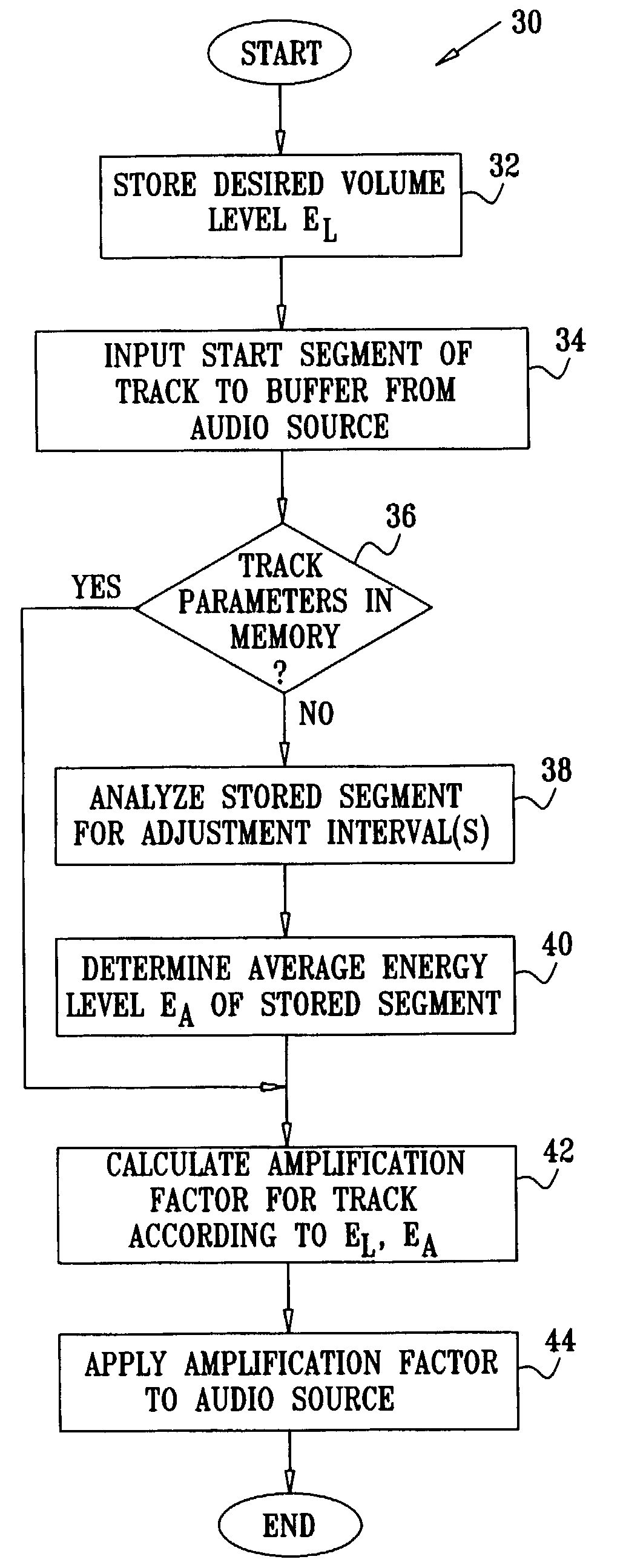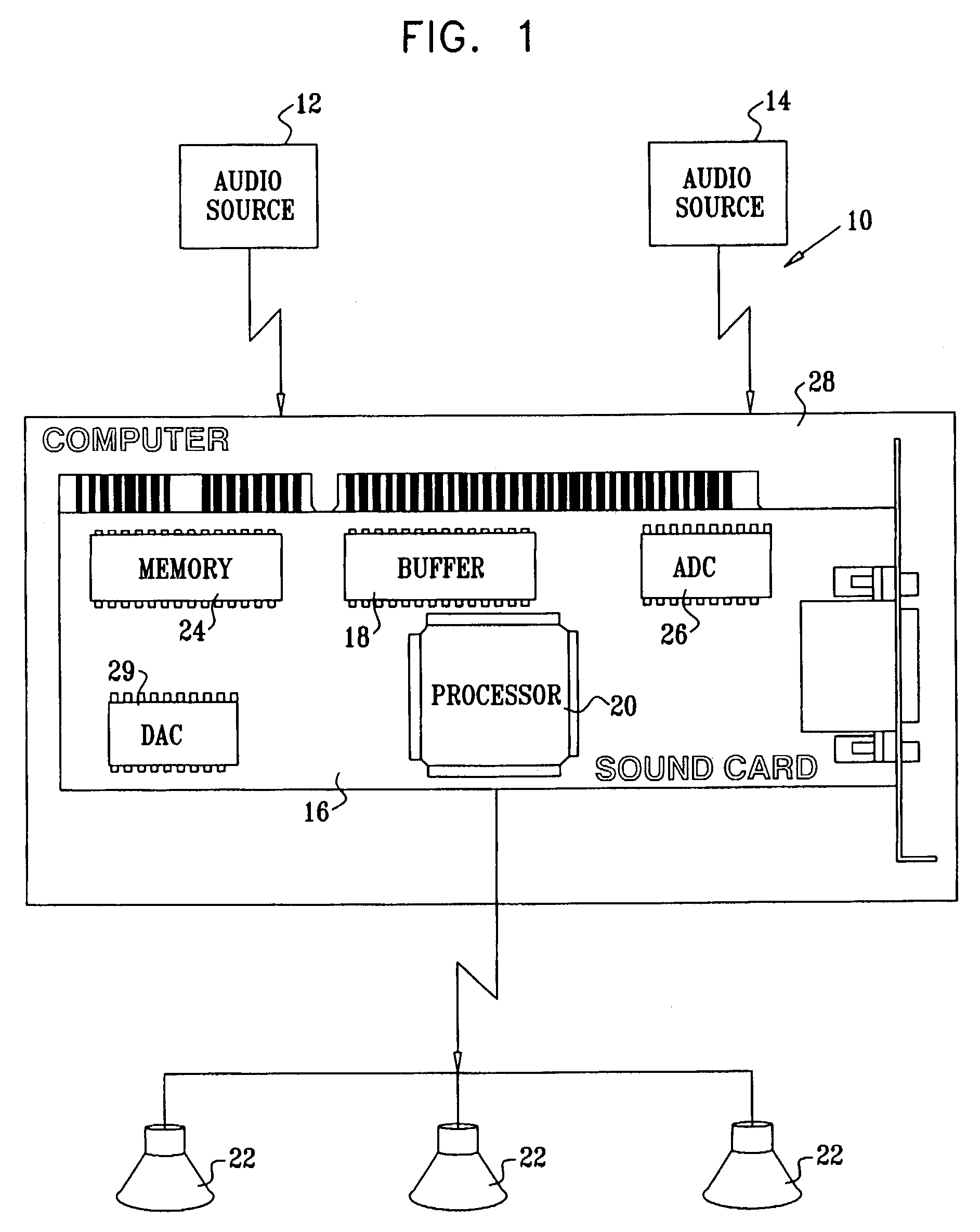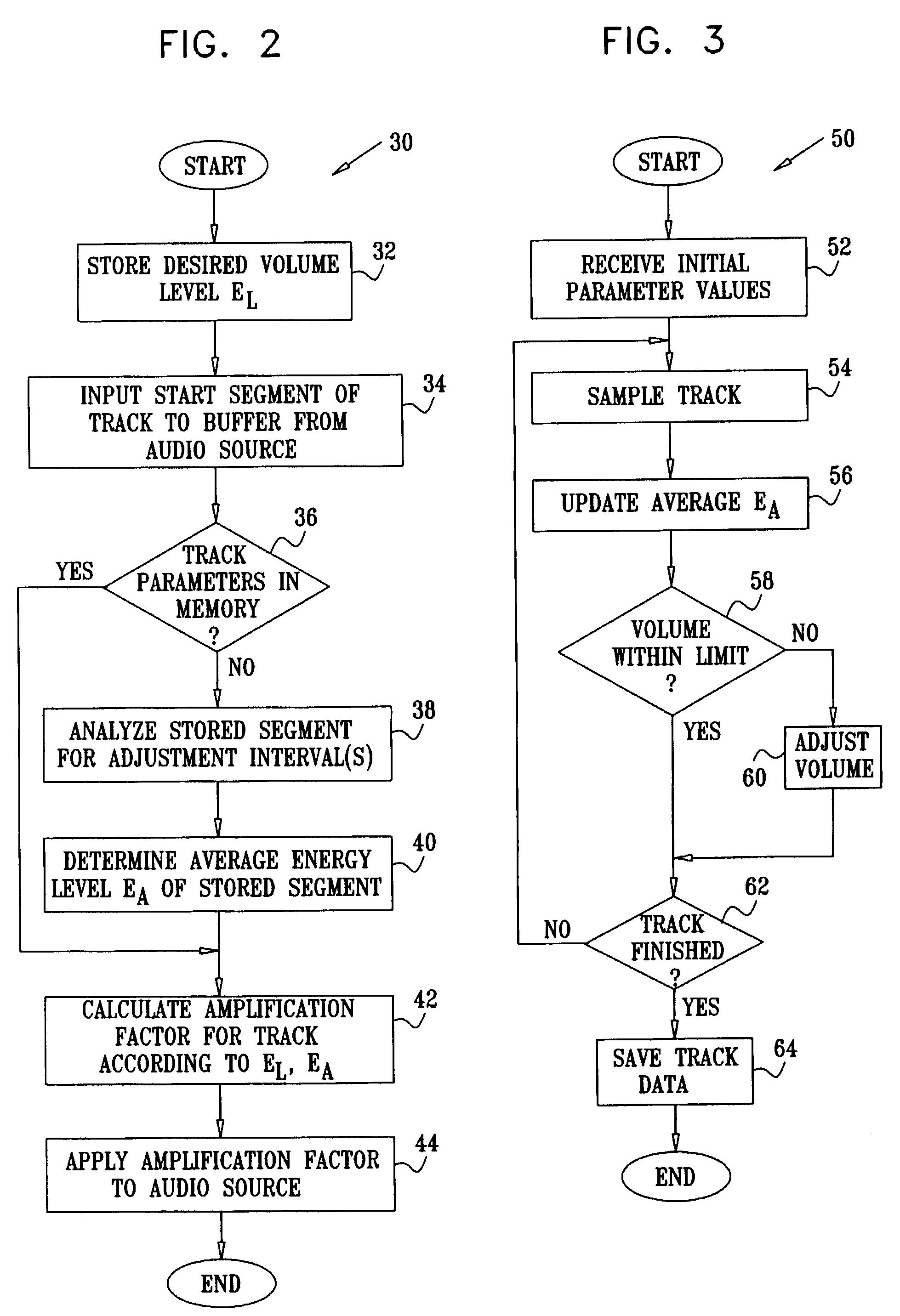Dynamic normalization of sound reproduction
a dynamic normalization and sound technology, applied in the field of sound production, can solve the problems of significantly affecting the final level of sound output from the mixing equipment, the need for constantly adjusting the volume control, and at the very least annoying
- Summary
- Abstract
- Description
- Claims
- Application Information
AI Technical Summary
Benefits of technology
Problems solved by technology
Method used
Image
Examples
Embodiment Construction
[0101]Reference is now made to FIG. 1, which is a schematic diagram illustrating a sound system 10, according to a preferred embodiment of the present invention. System 10 comprises a sound card 16, which operates as an audio amplifier and which is able to receive audio data from a variety of audio sources known in the art, such as compact discs (CDs), tapes, and audio files. The sources may comprise one or more digital audio sources (DASs), such as CDs, or one or more analog audio sources, such as analog tapes. The sources may be directly coupled to sound card 16, by cabling such as fiber optic or conductive cables. Alternatively, the sources may be coupled indirectly to sound card 16, such as via a network or wireless relay, wherein the sources are at a first node of the network or relay, and the sound card is at a second node of the network / relay. It will be understood that, especially in the case of audio received via a network such as the Internet, each audio source may compris...
PUM
 Login to View More
Login to View More Abstract
Description
Claims
Application Information
 Login to View More
Login to View More - R&D
- Intellectual Property
- Life Sciences
- Materials
- Tech Scout
- Unparalleled Data Quality
- Higher Quality Content
- 60% Fewer Hallucinations
Browse by: Latest US Patents, China's latest patents, Technical Efficacy Thesaurus, Application Domain, Technology Topic, Popular Technical Reports.
© 2025 PatSnap. All rights reserved.Legal|Privacy policy|Modern Slavery Act Transparency Statement|Sitemap|About US| Contact US: help@patsnap.com



